Late in 2016 Linx launched the Versae range of tablets in a 10inch and larger 12inch model. But, these new systems presented as a 2-1 model, (as were the older Linx10 and 1010b m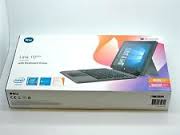 odels), have a sharper more professional look and feel to that of the older model. Many of the websites seem to confuse this model with the 1010b, and the 10v64 and it’s a very different beast indeed.
odels), have a sharper more professional look and feel to that of the older model. Many of the websites seem to confuse this model with the 1010b, and the 10v64 and it’s a very different beast indeed.
As gone is the rubberised no slip surface on the back of the tablet, now replaced with sturdy black aluminium. The fold out or origami keyboard stand has gone, and is now supplied with a separate click connect keyboard a la Surface, and the unit having its own kick stand, mimics the classic Microsoft Surface look and feel styling overall.
If you get a hold of one of these machines from Exertis, you won’t be disappointed. Provided you know what you’re taking on, as although it has the appearance of a Surface Clone, it most certainly isn’t one. The V64 is the first clue, the system comes with limited maximum 64Gb on board storage, but does allow for some expansion by means of the micro SD card slot. The system utilises the last of the Intel Atom processors in a quad core configuration, which gives the little machine quite a boost operationally with fast RAM, but low power use. But, the processor is also a nail in the coffin of the device, as Intel have now ceased work on the Atom processor, and is no longer being manufactured by Intel.
With Microsoft’s Edu push for the Windows 10S and cheap systems, it’s a shame the 10v64 is already ‘out of date’, as its specifications are great for a good solid base computer for Education needs. The 10v64 has the styling and look of the Surface, but the bargain price comes with a few limitations. Measuring your requirement, means you may be able to have this Linx as your mobility device and yes, it can replace your laptop (depending on your circumstances), all without burning a hole in the pocket/purse strings. It’s an ideal take to school/college device, and for a good solid mobile device for work.
Setup/OOB
The traditional blue study cardboard box contains the tablet unit, and keyboard, with a box for the power supply and USB to mini USB adaptor. The power supply is now an all in one affair, with no click assembly as did the older models. A gripe I have is that the length of the charger is that supplied to all tablets (too short), fine on the desktop power supply, but will have a struggle if you need to go to the floor for a power outlet. But, the 2in1 was not designed to be plugged in permanently, it’s a device for being on the move, so shouldn’t grumble about that point.
First hurdle you’ll probably encounter is the Windows 0/S upgrade, as the system comes with 1511 version of Windows 10. Not that the upgrade is not smooth to 1607 or 1703 for that matter, it’s just getting to the upgrade download that’s a bit of an obstacle. The Linx settings not to download on specific battery charge % means that you’ll have to fully charge, and alter the battery saver settings to get the ball rolling on the upgrade. Once upgraded there’s no issues with Camera, blue tooth etc. Hence the smooth transition I mentioned.
The second hurdle will be the SD expansion, remember to reboot after you insert the SD card so it’s recognised by the system. Having got over these two minor obstacles you’re up and away.
Unlike the original 8 and 10 tablets that the company launched, the Versare doesn’t come with Office 365 included (no doubt Microsoft are weaning users off the old style personal edition). Instead, on install you’ll see three blank tiles that act as shortcuts to the store, so you can download the Word, Excel and PowerPoint apps to use if you have a 365 account already. In a way, this is advantageous disk space wise, in not having to install the full Office suite. But, the Office apps are more than adequate for use on the move for word-processing and spreadsheet use, and are upgraded regularly adding extra features.
The device
Having 4GB RAM is a first for Linx, and lets the Windows 10 Home software it comes with work fine, a definite bonus for the more power hungry old tablet users that are out there, capable to multitasking around four applications with no noticeable degradation to performance.
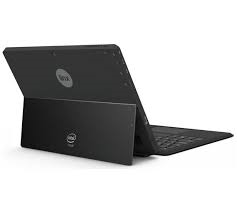 The 10v64 fits nicely in the sub £200 bracket, obvious hardware restrictions were used in its manufacture. For example, the front and rear built in webcams are both 2 mega pixels not exactly the best, but sufficient for video calling and taking the occasional snap if needs be. The 10″ touchscreen is 720 standard HD 1200×800, again not the highest quality, but provides a good clear quality image for the desktop use and general viewing purposes, even for long periods of time.
The 10v64 fits nicely in the sub £200 bracket, obvious hardware restrictions were used in its manufacture. For example, the front and rear built in webcams are both 2 mega pixels not exactly the best, but sufficient for video calling and taking the occasional snap if needs be. The 10″ touchscreen is 720 standard HD 1200×800, again not the highest quality, but provides a good clear quality image for the desktop use and general viewing purposes, even for long periods of time.
The tablet unit itself is a weighty affair (remember I’m used to working with the smaller 8″ tablets) not only by its increased size, but the aluminium body and kickstand that allows the tablet to be used in laptop mode, so this in my opinion is a machine for using more in laptop mode remotely, rather than tablet style wandering about, as it will become unwieldy after a time.
Under the hood beats one of the last and best Atom processors the x5-Z8300 a 64bit Quad core solid heart. You’ll find that the Linx can work well in desktop mode and handle a moderate amount of multitasking in its stride. The battery’s no disappointment, with you getting a good 5 hours processing time out of it before the sirens start to wail J which isn’t that bad for work purposes, as you can sneak in a recharge top up easily at lunch whilst in use.
The charger has gone back to a one-piece micro usb affair, and the device does take a little time to re charge fully.
Additional ports
Another difference between the 1010 and the 10v64 is the addition of a full sized USB 3 port on the unit.
 There’s also the standard Linx mini USB port (with an adapter supplied) enabling two full size USB ports to be available. Which is handy for a mouse, and connecting to external storage for example. The mini HDMI port is also available, allowing the unit to output to another screen if so required.
There’s also the standard Linx mini USB port (with an adapter supplied) enabling two full size USB ports to be available. Which is handy for a mouse, and connecting to external storage for example. The mini HDMI port is also available, allowing the unit to output to another screen if so required.
Keyboard
The system comes with a click connect keyboard now, much like the Surface, with a good positive click connection. Overall the keyboard (which is obviously reduced by the 10 inch size) works well, and doubles as a folder over cover.
 The ability to use Fn key and alternative keys marked in the classic blue colour gives you the missing additional characters, and a number pad replication. The keyboard also contains the central mouse pad. Never been a great fan of mousepads, but once you get used to the occasional quirk, (moving mouse pointer and hitting the left/right button area) this works okay too. But for heavy mouse work, I’d recommend you make use of the USB and plug in an external one, to save your sanity.
The ability to use Fn key and alternative keys marked in the classic blue colour gives you the missing additional characters, and a number pad replication. The keyboard also contains the central mouse pad. Never been a great fan of mousepads, but once you get used to the occasional quirk, (moving mouse pointer and hitting the left/right button area) this works okay too. But for heavy mouse work, I’d recommend you make use of the USB and plug in an external one, to save your sanity.
Upgrade-ability?
My device was recently upgrade to the 1703 Creators Edition of Windows10 and everything ran fine with the update, and not one of the “this application has been removed as it’s no longer compatible messages. Hardware wise you’re stuck with the 4GB DDR3 SDRAM (which is quite nippy) and the 64gb internal. The SD card can be expanded to allow another 200gb.
In the field?
So, is this a tablet that can replace your laptop? It certainly can for me! Both work and home computing for me is heavily reliant on cloud, using the 10v64 was no different to me using the laptop/notebook as that’s where much of the software I use is held. Basically, give me tablet and a fast internet connection to sail her by and I’m fine.
 The 4GB memory and what I can only say is best of the Atom processors it’s a Quad core! Really work together well for locally installed applications, there’s very little lag in launching and running applications. Going through updates is much easier with SSD as I’ve found.
The 4GB memory and what I can only say is best of the Atom processors it’s a Quad core! Really work together well for locally installed applications, there’s very little lag in launching and running applications. Going through updates is much easier with SSD as I’ve found.
The screen quality is good clear with a crisp resolution and usable in bright light. With the kick stand you only get two viewing angles 40 and 80 degrees but a desk the angle is sufficient to allow the screen to be visible without too much glare from windows or overhead lights, so is fine for working at the desk, at a table or a good flat surface somewhere if you’re out and about.
The keyboard arrangement works well uses a powerful magnetic catch that connects two prongs on the top of the hinge to a single opening on the bottom edge of the tablet screen. A small connective strip between the prongs forms the electrical connection between the keyboard and the screen. The keyboard connects and more importantly stays connected well without the need for a release clip/button, and if you need to move the keyboard folders over the screen to make a good cover.
On the whole this is a great little machine, now the alternative to my use of the 8″ tablet work working on the move. The 10v64 is well built, works well and a solid reliable device



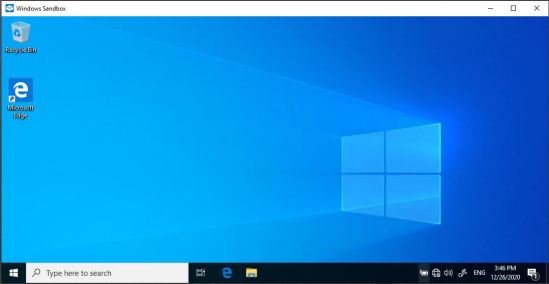
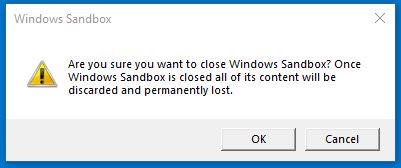




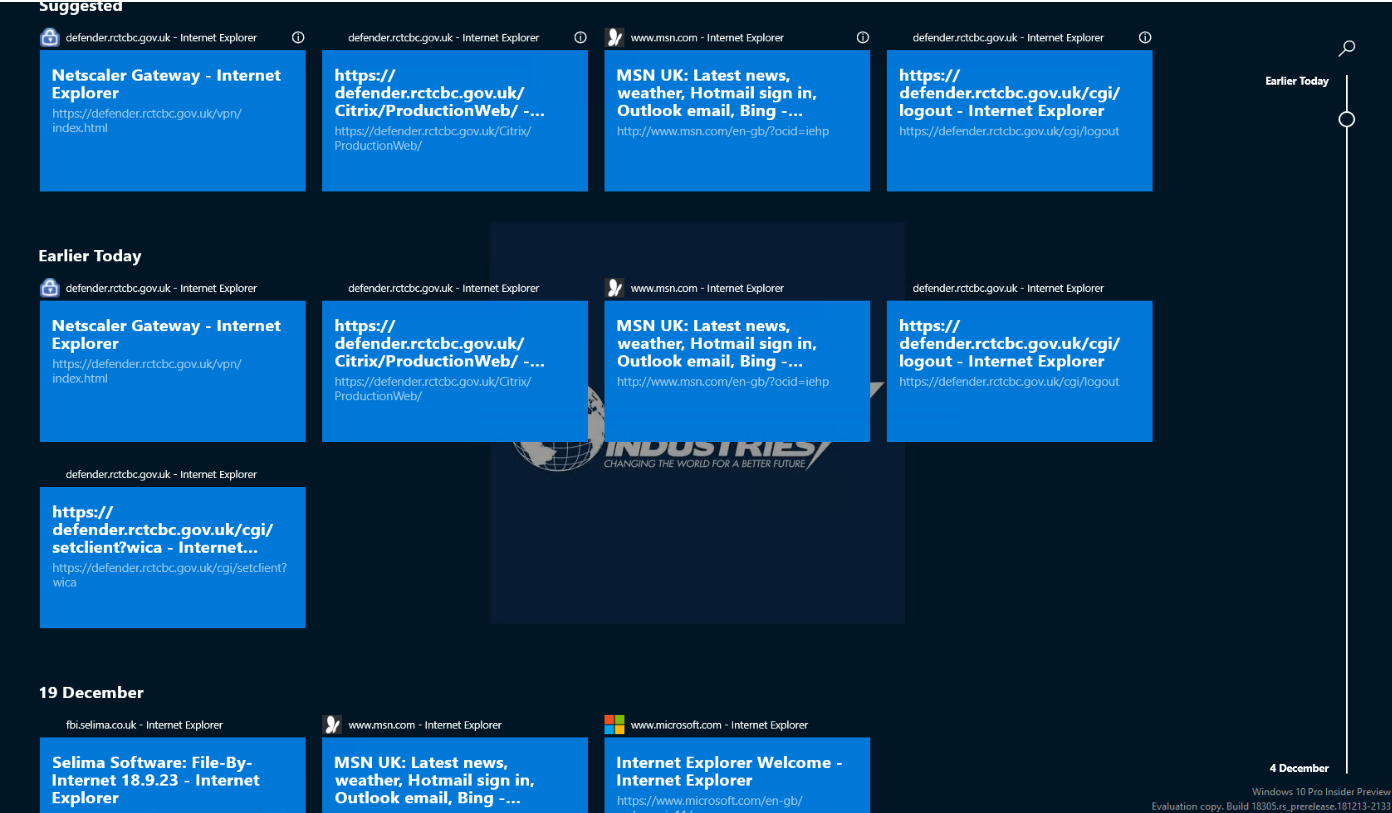

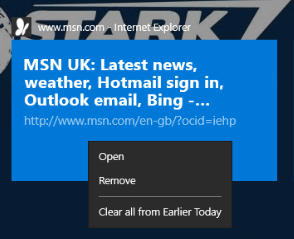






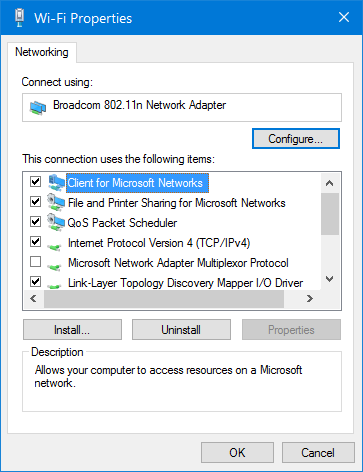

 odels), have a sharper more professional look and feel to that of the older model. Many of the websites seem to confuse this model with the 1010b, and the 10v64 and it’s a very different beast indeed.
odels), have a sharper more professional look and feel to that of the older model. Many of the websites seem to confuse this model with the 1010b, and the 10v64 and it’s a very different beast indeed. The 10v64 fits nicely in the sub £200 bracket, obvious hardware restrictions were used in its manufacture. For example, the front and rear built in webcams are both 2 mega pixels not exactly the best, but sufficient for video calling and taking the occasional snap if needs be. The 10″ touchscreen is 720 standard HD 1200×800, again not the highest quality, but provides a good clear quality image for the desktop use and general viewing purposes, even for long periods of time.
The 10v64 fits nicely in the sub £200 bracket, obvious hardware restrictions were used in its manufacture. For example, the front and rear built in webcams are both 2 mega pixels not exactly the best, but sufficient for video calling and taking the occasional snap if needs be. The 10″ touchscreen is 720 standard HD 1200×800, again not the highest quality, but provides a good clear quality image for the desktop use and general viewing purposes, even for long periods of time. There’s also the standard Linx mini USB port (with an adapter supplied) enabling two full size USB ports to be available. Which is handy for a mouse, and connecting to external storage for example. The mini HDMI port is also available, allowing the unit to output to another screen if so required.
There’s also the standard Linx mini USB port (with an adapter supplied) enabling two full size USB ports to be available. Which is handy for a mouse, and connecting to external storage for example. The mini HDMI port is also available, allowing the unit to output to another screen if so required. The ability to use Fn key and alternative keys marked in the classic blue colour gives you the missing additional characters, and a number pad replication. The keyboard also contains the central mouse pad. Never been a great fan of mousepads, but once you get used to the occasional quirk, (moving mouse pointer and hitting the left/right button area) this works okay too. But for heavy mouse work, I’d recommend you make use of the USB and plug in an external one, to save your sanity.
The ability to use Fn key and alternative keys marked in the classic blue colour gives you the missing additional characters, and a number pad replication. The keyboard also contains the central mouse pad. Never been a great fan of mousepads, but once you get used to the occasional quirk, (moving mouse pointer and hitting the left/right button area) this works okay too. But for heavy mouse work, I’d recommend you make use of the USB and plug in an external one, to save your sanity. The 4GB memory and what I can only say is best of the Atom processors it’s a Quad core! Really work together well for locally installed applications, there’s very little lag in launching and running applications. Going through updates is much easier with SSD as I’ve found.
The 4GB memory and what I can only say is best of the Atom processors it’s a Quad core! Really work together well for locally installed applications, there’s very little lag in launching and running applications. Going through updates is much easier with SSD as I’ve found.